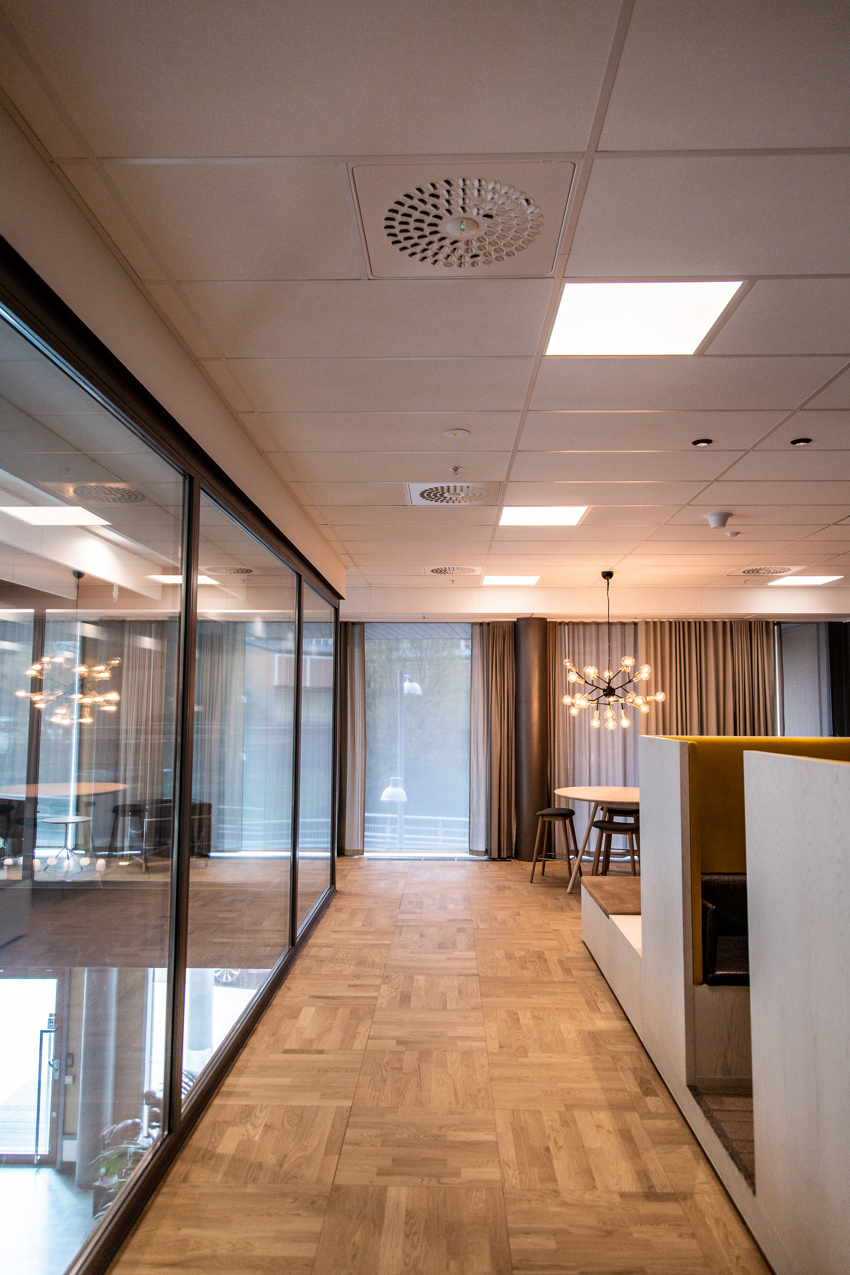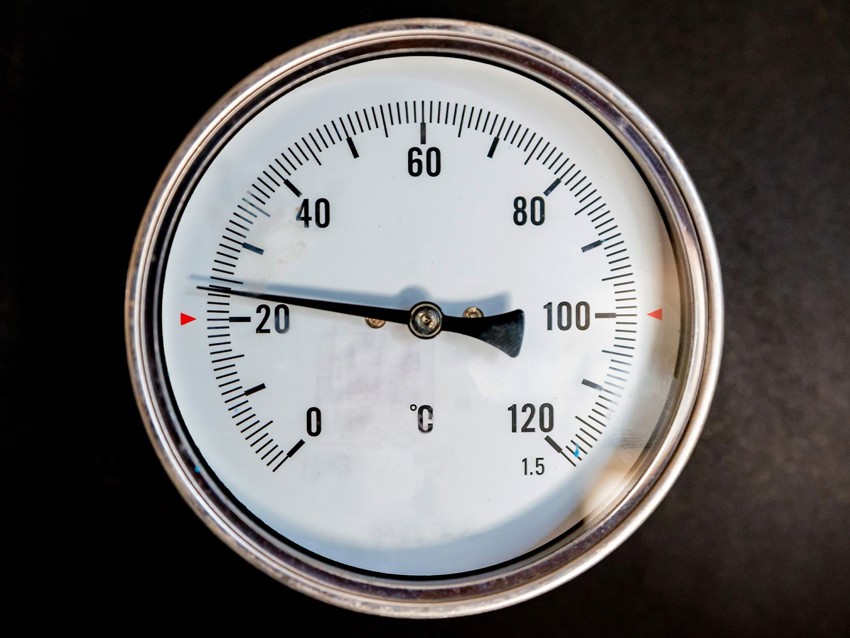Air- and waterborne systems
For a comfortable and healthy indoor climate, we need to manage the temperature in the room and constantly replace used air with fresh air. The latter is always managed by an airborne system, as only this medium can handle the requirements of good air quality. To some extent, air can also be used to carry energy to adjust the indoor temperature, but from an energy perspective, water is more efficient than air. This because a volume of water is capable of transporting multiple times more energy than the equivalent volume of air.
Different methods for heating or cooling a room
As said in the introduction above, cooling a room to achieve the ideal temperature may be done by either an airborne or a waterborne system. A number of factors determine which core system to opt for, for instance the investment cost, aesthetics and practical matters all need to be recognized. A first step is to consider what type of application, building or facility, the completed solution is intended for. It is thereafter important to establish the activity that will take place in the building, the demand differs between work and sports for instance.
Normally buildings of today, new-build or renovation, are constructed not to let excessive heat out of the building envelope. That is why, generally, the cooling demand is greater than the demand for heating. However, if there is a heating requirement it may be met by using induction units, radiators, heated floors or, in an airborne system, using duct heaters.
On the right, a few given requirements list a handful of examples for when an waterborne or an airborne system is advised to be used.
Typical applications for water and air respectively
Waterborne systems are normally used where low to medium air flows occur and a high cooling or heating capacity is required. Common in
- Offices
- IT rooms
- Hotels
- Classrooms
- Conference rooms
Air is commonly used where high to medium airflows, and perhaps variable air volumes, are present. Most often used in
- Congress halls
- Offices
- Light industry
- Classrooms
- Restaurants
- Shopping centres
- Sports arenas
The main difference between the two
When a waterborne system is applied the individual rooms are mainly heated or cooled by the means of water. A ventilation system is then primarily used to meet the requirements of air quality. Water is a high energy efficient medium and may therefore suit applications with high cooling demands. However, a waterborne system may not be an economically viable alternative if a building lack supply of water for this purpose.
With the above said, an airborne system can manage ventilation, heating and cooling altogether, or by the support of radiators, floor heating and similar. In terms of an airborne system, it is important to keep in mind what was said in the introduction, air is a less energy efficient medium and may therefore not suit all applications.
Commonly known waterborne products are induction units, comfort modules, chilled beams and fan coils, further, radiant ceilings is also an alternative. Air diffusers, used in airborne systems, are available in numerous modifications which varies in terms of created air flow pattern, ventilation principle, and possibility to make adjustments thereof
Key characteristics of water
A waterborne system is attractive because of the previously mentioned energy characteristics of water.
The wide variety of waterborne products are developed to use induction as the means to heat or cool a room. Many product solutions for waterborne systems can also ensure air quality by the means of connecting the airborne system to the waterborne product. Depending on the need inside the building, different products can allow for heat or cold to be introduced into the room in one or more directions and in high or low speed. This ensures a comfortable indoor climate.
In a property conversion or renovation, a waterborne system may be preferred as it is relatively easy to adapt water pipes, required for distribution of water, to the available space in the existing building. Nonetheless, water then needs to be accessible for this type of use.
Finally, a waterborne system has quite a few advantages but the system is more demanding at the time of the investment which in cases is crucial to acknowledge.

Essential aspects of air
AIR
Airborne cooling is based on keeping the supply air cooler than the room air. In cases where it is cooler outdoors than indoors, the cooling will, at least for some time during the day and year, be free. This is called free cooling and it is clearly energy efficient and economically favourable.
Airborne systems are widely used and suitable in applications where similar indoor climate needs apply. Duct heaters and the wide range of air diffusers allow for slightly different requirements to be set on different floor levels or in different climate zones. Then, carefully chosen diffusers can maintain a good ejection functionality of the supply air and allow for the Coanda effect to persist, even at low supply air temperatures. This eliminates the risk of experiencing high air velocity draughts in the occupied zone.
Considering the somewhat less complex solution, and the likely existence of ducts and shafts for an airborne system in conversion or renovation properties, air is a cost efficient alternative in regards to the investment.
Understand cooling and heating loads
Excess heat that has to be removed from a building to maintain the indoor temperature below a required maximum is called the cooling load.
It is important to distinguish the sensible cooling capacity load and the total cooling capacity load, including wet cooling. Sensible cooling capacity refers to the capacity that corresponds to the temperature difference between the desired temperature and the temperature that would have been without comfort cooling. The total cooling capacity shall also include the latent cooling load which include wet cooling. This concerns the enthalpy difference that must be accomplished in order for the supply air to be dehumidified in the ventilation unit’s and/or fanned air cooler’s cooling coil. If the latent cooling load is considered, the total cooling load generally increases by over 100%.
